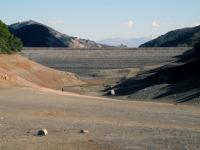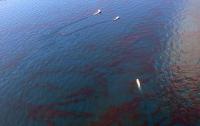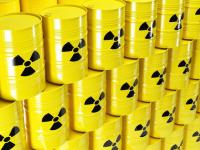-
Megadrought lasting three decades likely for Southwest U.S., Midwest

The consequences of climate change paint a bleak picture for the Southwest and much of America’s breadbasket, the Great Plains. The role of climate change in causing extreme heat waves, drastic rainfall, negative impacts on human health, and threatened food security have received more attention recently than megadrought, but scientists view prolonged drought risk as yet another natural hazard that becomes more likely from human activity.
-
-
New technology pinpoints water contamination sources

When the local water management agency closes your favorite beach due to unhealthy water quality, how reliable are the tests they base their decisions on? As it turns out, those tests, as well as the standards behind them, have not been updated in decades. Now scientists have developed a highly accurate, DNA-based method to detect and distinguish sources of microbial contamination in water.
-
-
Optimal strategies to cope with climate change depend on the pace of change
What would we do differently if sea level were to rise one foot per century versus one foot per decade? Until now, most policy and research has focused on adapting to specific amounts of climate change and not on how fast that climate change might happen. Researchers, using sea-level rise as a case study, have developed a quantitative model that considers different rates of sea-level rise, in addition to economic factors, and shows how consideration of rates of change affect optimal adaptation strategies.
-
-
Florida tightens public notification rules for pollution incidents
Last week Governor Rick Scott instructed Florida Department of Environmental Protection (DEP) Secretary Jon Steverson to issue an emergency rule that establishes new requirements for public notification of pollution incidents. The rule is to take effect immediately. Scott issued the instruction following the sewage spill in Pinellas County and the sinkhole at Mosaic’s New Wales facility.
-
-
Massive 2014 West Virginia chemical spill was preventable: CSB
The Chemical Safety Board’s (CSB) final report into the massive 2014 release by Freedom Industries of chemicals into the primary source of drinking water of Charleston, West Virginia, concludes that Freedom Industries failed to inspect or repair corroding tanks, and that as hazardous chemicals flowed into the Elk River, the water company and local authorities were unable effectively to communicate the looming risks to hundreds of thousands of affected residents, who were left without clean water for drinking, cooking, and bathing.
-
-
Surprise finding could improve future handling of nuclear waste

A researcher at the University of Manchester has made a surprise finding after observing variations of a chemical bond with a radioactive metal called thorium — and this newly revealed relationship could one day contribute to improving nuclear fuel management.
-
-
California's almond boom ramped up water use, consumed wetlands
Converting land in California to grow water-hungry almonds between 2007 and 2014 has led to a 27 percent annual increase in irrigation demands — despite the state’s historic drought. The expansion of almonds has also consumed 16,000 acres of wetlands and will likely put additional pressure on already stressed honeybee populations.
-
-
Detecting sea-level rise acceleration to improve U.K. coastal flood defenses
Accelerations in the rate of sea-level rise and the time required to upgrade coastal flood defense infrastructure, such as the Thames Barrier, will be investigated as part of a new research initiative. The E-Rise project will aim to better understand the likely lead times for upgrading or replacing coastal defense infrastructure around the United Kingdom during the twenty-first century. It will also assess whether we could detect sea-level accelerations earlier to provide sufficient lead time for action.
-
-
Damaging, costly extreme-weather winters are becoming more common in U.S.
The simultaneous occurrence of warm winters in the West and cold winters in the East has significantly increased in recent decades. The damaging and costly phenomenon is very likely attributable to human-caused climate change, according to a new study. In the past three years alone the combination of heat-related drought in the West and Arctic conditions in the East have pinched the national economy, costing several billion dollars in insured losses, government aid and lost productivity. When such weather extremes occur at the same time, they threaten to stretch emergency responders’ disaster assistance abilities, strain resources such as interregional transportation, and burden taxpayer-funded disaster relief.
-
-
Insights on Deepwater Horizon disaster
The soon-to-be-released thriller “Deepwater Horizon,” which opens in theaters 30 September, promises moviegoers a chilling reenactment of one of history’s worst oil rig disasters. One scholar of societal collapse will enter the theater with a big-picture view of the perfect storm of factors that led to the explosion and oil spill that killed eleven people and sent more than 200 million gallons of crude oil spewing toward the nation’s southern coastline for eighty-seven days.
-
-
Abnormalities found in drinking water in Texas’s Eagle Ford Shale region
Chemists studying well water quality in the Texas’s Eagle Ford Shale region found some abnormal chloride/bromide ratios, alongside evidence of dissolved gases and sporadic episodes of volatile organic compounds, all indicative of some contamination from industrial or agricultural activities in the area.
-
-
Radioactive wastewater enters Florida major aquifer after huge sinkhole opens up below fertilizer plant
At least 980 million liters of highly contaminated water — including radioactive substances – has leaked into one of Florida’s largest sources of drinking water. The leak was caused by a huge sinkhole which opened up beneath a fertilizer plant near Tampa. The sinkhole caused highly contaminated waste water to pass into an aquifer which supplies much of the state. The waste water contained phosphogypsum, a by-product of fertilizer production, which contains naturally occurring uranium and radium. the Floridan aquifer aquifer underlies all of Florida and extends into southern Alabama, Georgia, and South Carolina, supplying groundwater to the cities of Tallahassee, Jacksonville, Gainesville, Orlando, Daytona Beach, Tampa, and St Petersburg.
-
-
Space: Cybersecurity’s final frontier

The world is dangerously unprepared for a global disaster sparked by cyberattacks on space infrastructure. Much of the world’s infrastructure – including the economies and militaries of the world’s developed countries – is dependent on space machinery, and any disruption of that machinery would have a cascading consequences – some merely debilitating, other catastrophic. Governments around the world have invested heavily in protecting infrastructure on Earth – yet not nearly enough has been done to thwart threats from space to that infrastructure.
-
-
Risk of another Chernobyl- or Fukushima-type accident worryingly plausible

The biggest-ever statistical analysis of historical nuclear accidents suggests that nuclear power is an underappreciated extreme risk and that major changes will be needed to prevent future disasters. The researchers’worrying conclusion is that, while nuclear accidents have substantially decreased in frequency, this has been accomplished by the suppression of moderate-to-large events. They estimate that Fukushima- and Chernobyl-scale disasters are still more likely than not once or twice per century, and that accidents on the scale of the 1979 meltdown at Three Mile Island (a damage cost of about $10 billion) are more likely than not to occur every 10-20 years.
-
-
The smart grid makes it easier for hackers to turn out the lights
The development of the smart power grid and the smart meter in our homes to accompany it brings several benefits, such as improved delivery and more efficient billing. Conversely, any digital, connected technology also represents a security risk. The smart electricity grid is more vulnerable to accidental and incidental problems with the flow of data, and to malicious manipulation for the sake of sabotage, criminal, or online military or terrorist action.
-
More headlines
The long view
Helping Strengthen America’s Critical Infrastructure
Everyday life depends on a robust infrastructure network that provides access to running water, communications technology and electricity, among other basic necessities. The experts who keep our national infrastructure secure and resilient also need a strong network to share their knowledge and train the next generation of professionals capable of solving complex infrastructure challenges.
AI and the Future of the U.S. Electric Grid
Despite its age, the U.S. electric grid remains one of the great workhorses of modern life. Whether it can maintain that performance over the next few years may determine how well the U.S. competes in an AI-driven world.
Using Liquid Air for Grid-Scale Energy Storage
New research finds liquid air energy storage could be the lowest-cost option for ensuring a continuous power supply on a future grid dominated by carbon-free but intermittent sources of electricity.
Enhanced Geothermal Systems: A Promising Source of Round-the-Clock Energy
With its capacity to provide 24/7 power, many are warming up to the prospect of geothermal energy. Scientists are currently working to advance human-made reservoirs in Earth’s deep subsurface to stimulate the activity that exists within natural geothermal systems.
Experts Discuss Geothermal Potential
Geothermal energy harnesses the heat from within Earth—the term comes from the Greek words geo (earth) and therme (heat). It is an energy source that has the potential to power all our energy needs for billions of years.
